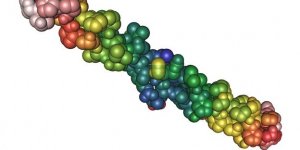| News / Science News |
Toxic tiger rattlesnake venom advances genetic science techniques
The tiger rattlesnake possesses the simplest, yet most toxic, venom of any rattlesnake species. Now new research led by a University of South Florida biologist explains the genetics behind the predator's fearsome bite.

Biologist Mark Margres with an Eastern diamondback rattlesnake on Caladesi Island, Florida. Photo: USF
USF biologist Mark Margres and his colleagues sequenced the genome of the tiger rattlesnake to understand the genotype of the venom trait. Despite the simplicity of the rattlesnake's venom, Margres says it is roughly 40 times more toxic than the venom of the Eastern diamondback rattlesnake in Florida.
The work is the most complete characterization of the venom gene regulatory network to date, the researchers say. The identification of key mechanisms in producing the particularly toxic venom will help scientists explain a wide array of genetic questions.
"Simple genotypes can produce complex traits," Margres said. "Here, we have shown the opposite is also true -- a complex genotype can produce simple traits."
The project sought to explain whether trait differences are derived from differences in the number of genes, their sequence and how they are regulated.
An organism's genotype is the set of genes it carries; its phenotype is all its observable characteristics, which can be influenced by its genes, the environment in which it lives, and other factors.
Evolutionary biologists work to understand how genes influence variations in phenotype among otherwise similar organisms. In this case, they looked at why different species of rattlesnakes differ in venom composition and toxicity. (National Science Foundation)
YOU MAY ALSO LIKE





